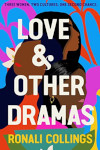Orlando Ortega-Medina – The Fitful Sleep Of Immigrants
Posted 7th April 2023
Category: Reviews Genres: 2020s, LGBT, Psychological, Social, Thriller
Comments Off on Orlando Ortega-Medina – The Fitful Sleep Of Immigrants

Orlando Ortega-Medina’s third novel, publishing a few years after the almost psychedelic in atmosphere, semi-religious The Savior Of 6th Street, offers a difference to his previous books. Whereas the others have been quite individual in terms of content and specifics of genre (though they are no less fantastic for it), The Fitful Sleep Of Immigrants sees the author turning 90 or so degrees towards the mainstream; the book, whilst still sporting what could be termed classic psychological and thriller Ortega-Medina elements, offers its story to an additional audience or two.
This new novel looks at a few impactful periods in the life of one Marc Mendes, a lawyer from San Francisco via Los Angeles, via, in heritage, Cuba, Spain, Syria, and Israel. Marc’s religion, and religious and cultural heritage, as well as his sexuality, inform almost every part of this novel, and it’s to stunning effect. In the ‘present day’, which in this book is 1997, Marc is in a happy and long-term relationship with Issac, a political refugee from El Salvador. This starts to change when Marc’s law firm is approached first by a man who has been accused of murder and then, later, when Issac finds himself looking at possible deportation for illegal entry and settlement in the US. Surrounding and informing this present day narrative is Marc’s relationship history, a romance in his younger years that later took a very sorry turn.
Ortega-Medina takes these subjects and many more and handles them with aplomb. Using his unique style of writing – conversational on the surface with a tougher interior – the author takes his character on a personal and relational journey that begins with of all his life’s problems cropping back up at once. It’s fast-paced, and every so often verges on the confusing, which is absolutely on purpose. You are always with Marc and, as Marc is told himself, he can be an unreliable narrator.
The keyword of the title, ‘immigrants’ wraps around everything else in the novel, holding it together with a couple of different glues. The main aspect of the novel in a variety of ways, immigration and its link to asylum and forceful exportation comes into play in Marc’s thoughts of his family heritage and, more so, understandably, Issac’s presence and life in the US. The author’s explanation of Issac’s situation is slow with fair reason; set in the 90s, people in the US especially would have hopefully had some idea of the situation but, more importantly and more notably, Ortega-Medina asks us as readers to decide for ourselves what should be the outcome for Issac based on more than the simple laws because the simple laws do not allow anywhere near enough space for specifics; there is then the point that every case needs to be looked at personally and with empathy in addition to the idea of specifics. And so we see Issac as Marc sees him, as many people see him – a phenomenal person who has triumphed, who has given back in spades to the country he came to live in, and who has made a comfortable long life with a US citizen. When Ortega-Medina does fill you in completely, towards the end, it only adds spades more to how you feel that it is right that Issac be given the lawful right to stay.
So Issac is a wonderful character, and it would be great to hear even more from him, but here we are with Marc. Marc’s life is very messy. A key part of his progression as a character comes in the form of Alejandro Silva, a client who Marc is drawn to due to a resemblance to a past partner, Simon. Alejandro does his best to get Marc’s attention and does so on a number of occasions due to Marc’s conflation of him with Simon, and whilst the plot thread is drawn out possibly to your distraction (but utterly necessarily in terms of the book) it has a particular relevance to Marc’s life that shows itself in time.
Marc has a lot of reckoning to do with himself and as the novel continues on he gets better at it – an incredible shaky start leading to some absolutely ‘bravo!’ moments – and you could be forgiven for wondering how much time there will be for Issac’s conflict arc. Suffice to say when it gets to the climax the pace picks up, the plotting and writing is more incredible than before, and it’s nail-biting. You get a real sense for the immigration system that was in place (still is in place in many ways) and the difficulties therein for the individuals facing deportation. The end itself is a brilliant mix of ends and beginnings and of hope.
The Fitful Sleep Of Immigrants shows that what we thought was great fiction from the author previously, was but an alright opening first serve. This latest work has raised the bar significantly.
Publisher: Amble Press (Bywater Books)
Pages: 265
Type: Fiction
Age: Adult
ISBN: 978-1-612-94263-6
First Published: 18th April 2023
Date Reviewed: 7th April 2023
I received this book from the author for review.
Latest Acquisitions (March 2023)
Posted 5th April 2023
Category: Acquisitions Genres: N/A
5 Comments
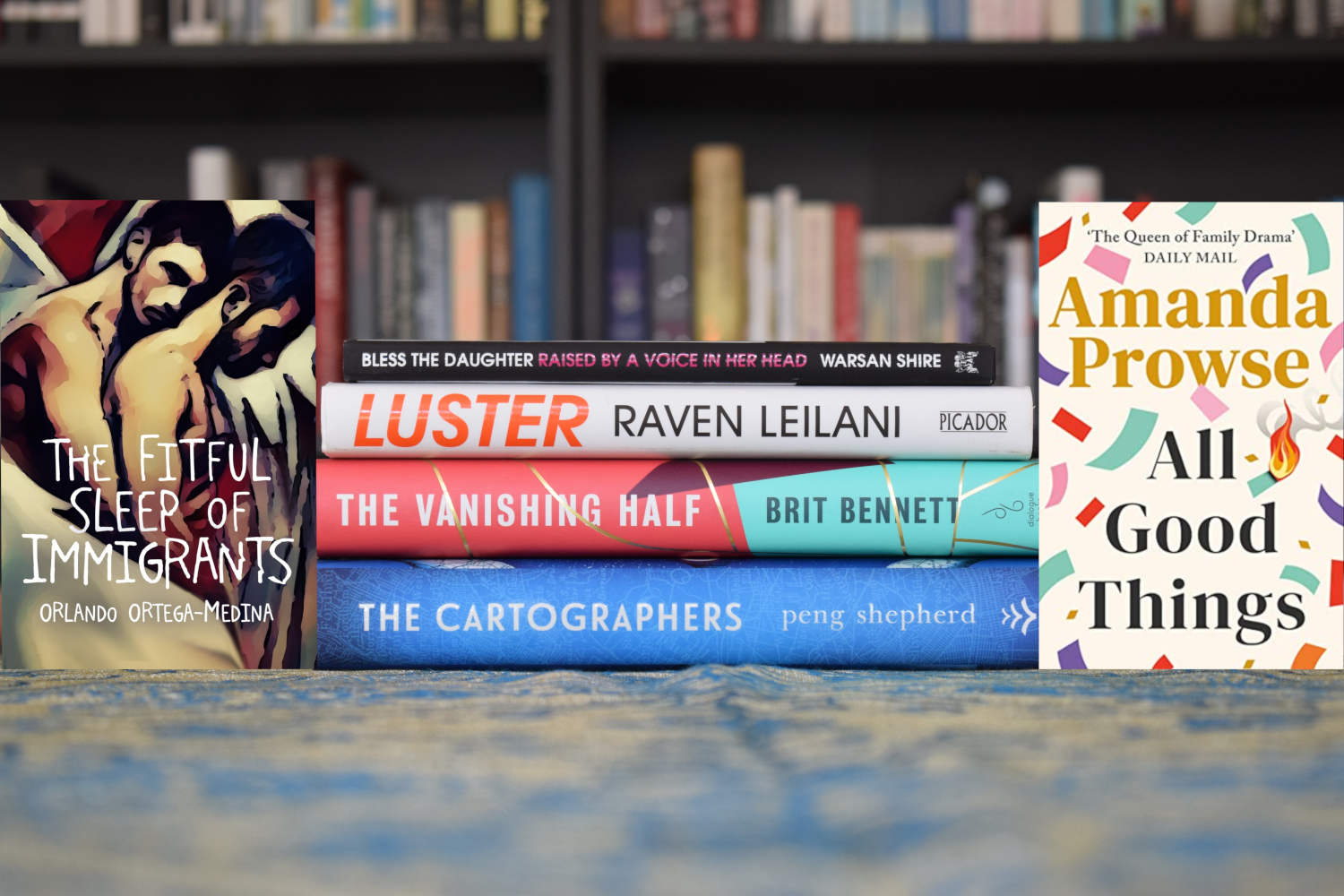
Another reason for excitement last month: I started getting myself back into the swing of things in regards to new books. I went to Netgalley to look up the details of Lisa See’s Lady Tan’s Circle Of Women and picked up a ‘read now’ book; I responded to an email; I bought a few of the books I had come across on my various quick looks at news during the last couple of years.
There’s a book left off this list – Chloe Gong’s These Violent Delights. I accounted for it last week… and I may have forgotten to add it to the stack when taking the above photo. (For transparency’s sake I will note the image above is a composite as I have the books at the sides in ebook format.)
Amanda Prowse: All Good Things – This is the ‘read now’ book, which I chose because of a slightly-relatable fact: at least until a few years ago, Amanda Prowse was one of the few big authors to visit Southampton for a signing, and this made me make a note to read one of her books one day. As we all know, putting an author on your to-be-read, especially without naming a book, is a sure-fire way to ensure you remember them only sporadically. I saw the book, I remembered, and I’m doing it now. This is effectively from the publisher for review.
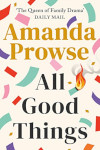
Daisy Harrop has always felt like she exists in the background, and since her mother stopped getting out of bed, her life has come to a complete standstill. Daisy would give anything to leave the shabbiest house on the street and be more like the golden Kelleways next door, with their perfectly raked driveway and flourishing rose garden…
Winnie Kelleway is proud of the beautiful family she’s built. They’ve had their ups and downs – hasn’t everyone? But this weekend, celebrating her golden wedding anniversary is truly proof of their happiness, a joyful gathering for all the neighbours to see.
But as the festivities get underway, are the cracks in the ‘perfect’ Kelleway life beginning to show? As one bombshell revelation leads to another and events start to spiral out of control, Daisy and Winnie are about to discover that things aren’t always what they seem.
Brit Bennett: The Vanishing Half – I have read a little about Brit Bennett; she’s a name I’ve seen around a lot, and I could do with becoming reacquainted with prize shortlists again, in this case the Women’s Prize for Fiction. (This book won the GoodReads Choice Award for Best Historical Fiction in 2020.)

The Vignes twin sisters will always be identical. But after growing up together in a small, southern black community and running away at age sixteen, it’s not just the shape of their daily lives that is different as adults, it’s everything: their families, their communities, their racial identities. Many years later, one sister lives with her black daughter in the same southern town she once tried to escape. The other passes for white, and her white husband knows nothing of her past. Still, even separated by so many miles and just as many lies, the fates of the twins remain intertwined. What will happen to the next generation, when their own daughters’ storylines intersect?
Orlando Ortega-Medina: The Fitful Sleep Of Immigrants – This will be the fourth book by the author I’ve read, and it’s his third novel. I have read it, and would say it’s the most accessible of his books yet; the others are all excellent but this one has more mainstream appeal. From the author for review.

Attorney Marc Mendes, the estranged son of a prominent rabbi and a burned-out lawyer with addiction issues, plots his exit from the big city to a more peaceful life in idyllic Napa Valley. But before he can realize his dream, the US government summons his Salvadoran life-partner Isaac Perez to immigration court, threatening him with deportation.
As Marc battles to save Isaac, his world is further upended by a dark and alluring client, who aims to tempt him away from his messy life. Torn between his commitment to Isaac and the pain-numbing escapism offered by his client, Marc is forced to choose between the lesser of two evils while confronting his twin demons of past addiction and guilt over the death of his first lover.
Peng Shepherd: The Cartographers – I came across the author and fell in love with the cover of this book (I’ll note it was the US edition, which has a library on it) and simply kept it in mind. It’s time.
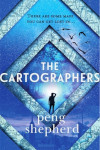
Nell Young’s whole life and greatest passion is cartography. Her father, Dr. Daniel Young, is a legend in the field and Nell’s personal hero. But she hasn’t seen or spoken to him ever since he cruelly fired her and destroyed her reputation after an argument over an old, cheap gas station highway map.
But when Dr. Young is found dead in his office at the New York Public Library, with the very same seemingly worthless map hidden in his desk, Nell can’t resist investigating. To her surprise, she soon discovers that the map is incredibly valuable and exceedingly rare. In fact, she may now have the only copy left in existence… because a mysterious collector has been hunting down and destroying every last one – along with anyone who gets in the way.
But why?
To answer that question, Nell embarks on a dangerous journey to reveal a dark family secret and discovers the true power that lies in maps…
Raven Leilani: Luster – For a while, I was seeing Leilani’s name everywhere and The Guardian in particular seemed rather taken with her work so while I was away from books and reading I noted her name down for when I was back.
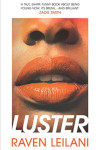
Edie is just trying to survive. She’s messing up in her dead-end admin job in her all-white office, is sleeping with all the wrong men, and has failed at the only thing that meant anything to her, painting. No one seems to care that she doesn’t really know what she’s doing with her life beyond looking for her next hook-up. And then she meets Eric, a white middle-aged archivist with a suburban family, including a wife who has sort-of-agreed to an open marriage and an adopted black daughter who doesn’t have a single person in her life who can show her how to do her hair. As if navigating the constantly shifting landscape of sexual and racial politics as a young black woman wasn’t already hard enough, with nowhere else left to go, Edie finds herself falling head-first into Eric’s home and family.
Warsan Shire: Bless The Daughter Raised By A Voice In Her Head – A couple of weeks ago I read about the line-up for this year’s Dylan Thomas Prize, was happy to see poetry included, and got Shire’s collection very soon after. Award-nominated, current, poetry, and a new-to-me poet? Yes please.
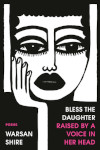
With her first full-length poetry collection, Warsan Shire introduces us to a young girl, who, in the absence of a nurturing guide, makes her own stumbling way towards womanhood. Drawing from her own life and the lives of loved ones, as well as pop culture and news headlines, Shire finds vivid, unique details in the experiences of refugees and immigrants, mothers and daughters, Black women, and teenage girls. In Shire’s hands, lives spring into fullness. This is noisy life: full of music and weeping and surahs and sirens and birds. This is fragrant life: full of blood and perfume and shisha smoke and jasmine and incense. This is polychrome life: full of henna and moonlight and lipstick and turmeric and kohl.
What books have you bought/borrowed/acquired recently?
January, February, And March 2023 Reading Round Up
Posted 3rd April 2023
Category: Round-Ups Genres: N/A
4 Comments
Given that my start back into reading and blogging only happened mid-March and I chose to start with a 1053-page book, I shouldn’t be surprised I only finished one book, and that a different one entirely. Having not accounted for the reads from this quarter at all, however, it seems less damning; I finish this quarter with two books. Let’s go.
Both books are works of fiction.
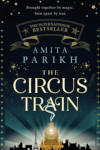
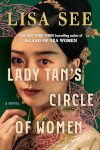
Amita Parikh: The Circus Train (2022) – Following the travels through WWII Europe of an international circus, this book looks closely at the lives of Lena (who has Polio), her illusionist father, and a stowaway Jewish boy, as they try to remain out of the Nazis’ interests, and continue their trade, whilst growing as people. There’s an interesting controversy here where Parikh looks at a Polio-free life for Lena that is in fact supported by mid-1900s medical treatment.
Lisa See: Lady Tan’s Circle Of Women (2023) – A fictionalisation of the life of a woman doctor in 1400s China (fictional because we know so little of her apart from the medicine). Absolutely superb.
This past half of a month (March) has been about getting back into reading properly. I currently have two books on the go and working on finishing at least one of them quickly (simply because it’s not over a thousand pages like the other). And for the first time in ages, I have a basic reading list to follow for the next few weeks.
What have you read recently?
Lisa See – Lady Tan’s Circle Of Women
Posted 31st March 2023
Category: Reviews Genres: 2020s, Historical, Social
Comments Off on Lisa See – Lady Tan’s Circle Of Women

Lisa See made a discovery during lockdown. As she was walking past her bookcase, she noticed a particular book she hadn’t yet read, a book about pregnancy and childbirth in Ming dynasty China; it included a woman doctor called Tan Yunxian and when See read about her she knew what she wanted to write about next1.
In Lady Tan’s Circle Of Women, See uses as a base what history tells us about Tan Yunxian, and fills the rest in with appropriate fictional detail. Having a list of cases, a small slither of information about Yunxian’s grandmother (also a doctor), and brief details from the Lady’s great-nephew who republished the book in the late 1500s, See weaves a story of a woman from a wealthy background who learns how to treat women for conditions often confined to women’s bodies, going above and beyond what a male doctor could do due. In creating her narrative, See takes Yunxian to situations that you will have to read the book to find out (it’s far too satisfying to spoil), and looks at a few closely-related aspects of life for wealthy women in medieval China.
One of these is the isolation that came with being a wealthy woman – being inside Yunxian’s head (the novel is told in a wonderful first person narrative) and See’s focus on the aspect, allows you to see the incredible downsides to such a social standing that you likely have at least some knowledge of already, here amplified to a near constant consideration. This is apt; Yunxian makes decisions always in the knowledge of what she can and can’t do, and what she can do isn’t very much. A woman in her position is a possession of men and her wants and needs are also controlled by senior women, such as her mother-in-law. See shows the restriction and limitation – as a child, Yunxian cannot leave her home. She will only leave the family compound when she marries, after which she will not leave her marital home. And then there is the fact that women who are wealthy, or who are not wealthy but destined to be bought as a concubine, must have their feet bound in order to please their future husbands, which makes the women literally unable to run. These considerations and thoughts See compares to the lives of poorer women, those with ‘big feet’, whose professions are often seen as dirty, but who can at least go wherever they want. Yunxian relies on ‘lesser’ women to give her a taste for what she is not allowed to see.
This, together with the first-person narrative, leaves a pronounced effect on the reader as you are essentially limited in your experience by the fact of being always in Yunxian’s head. But this is no bad thing; See uses this fact to remarkable effect, providing you with exactly what you have been wishing for as and when the appropriate time comes. You may well be able to close the book where Yunxian couldn’t change her life, but the unfolding of the story is highly pleasurable. Perhaps it’s not unexpected – See has been doing this writing thing for many years – but it’s no less fantastic when it happens.
This leads us to another aspect looked at closely – friendship and effective sisterhood. Yunxian makes a friend in childhood who is poor, which allows for both constant comparison of economic situations as they go through life, as well as the subject of jealousy. Jealousy has been included with a foundation of Chinese birth years – both Yunxian and her friend, Meiling, are Metal Snakes, creatures known for their stubbornness, conceitedness, but also their goodness, and See employs a variety of Metal Snake personality traits in the development of the two characters.
Sisterhood effectively extends to several other characters in the book. Lady Tan’s ‘circle of women’ includes, over various years, her grandmother, Meiling, Meiling’s mother, Miss Zhao (Yunxian’s father’s concubine), and Miss Chen (one of her father-in-law’s concubines). The lives of these women all add extra matter to the plot, which in turn leads to its epic atmosphere.
The world-building is rather electric. Yunxian’s world is so cloistered and yet there is never a dull moment, with See always keeping the days full of different conversations and the hustle and bustle of the household. You can feel the life of the household beyond the walls of any particular scene.
As said before, See gives the reader what they are after. This also applies to every question you may have and every plot thread that is begun; make no mistake, leave your question on the page and See will absolutely get back to you. No thread is ever left untied and the only things that are not completely explained are things that don’t really need to be explained.
Lady Tan’s Circle Of Women reminds us again of why Lisa See is so loved. It is another story brilliantly planned and written, an absolute joy to read despite the pain it may cause at times, and a great introduction for new audiences to a woman whose work still influences Chinese medicine today.
Publisher: Scribner (Simon & Schuster)
Pages: 339
Type: Fiction
Age: Adult
ISBN: 978-1-982-11708-5
First Published: 6th June 2023
Date Reviewed: 30th March 2023
I received this book from the author and publisher in preparation for a podcast recording.
Footnotes
1 Library Journal (15th March 2023) “New York Times Bestselling Author Lisa See Discusses Her New Novel Lady Tan’s Circle of Women”, accessed 30th March 2023
More Musings On My ‘Starting Books Problem’ (This Is A Bit Of A Practise Post)
Posted 24th March 2023
Category: Chit-Chat Genres: N/A
2 Comments
Two years ago I said this:
“I want to try and work past an issue I have where the feeling of being daunted by starting a new book (all those pages ahead of me…) means that it takes me time to get into the book. I need to get better not only at just starting and getting past the first pages – after which the issue disappears and I’m away – but also a (potentially) related issue, which I’ve spoken of before, where I never really take in the first page or so. Yes, this, despite my interest and focus on first lines.”1
I didn’t really think about anything much to do with books beyond trying to keep my podcast going in the last two years but what I do know is that the above topic is very relevant right now because a couple of days ago I sat down to read Voyager, struggled, and got annoyed with myself that I have this problem. So I’d like to try again.
When I think about it more, this problem extends; I have trouble getting past the first few pages in one sitting. I’ve the issue of the first page (usually), and then the issue of the extra daunting nature of the first few pages as a whole, up to 20 pages in fact. It’s one thing to think about reading, to blog, to write, to create social media posts and podcasts, and another entirely to actually read. Reading is, in its way, lonely and isolating (though I would say in general not2 – it’s just that act of sitting down and reading when you’re not reading aloud). I don’t know why 20 pages (every so often 30) is the boundary which, once crossed, I’m away, but it is.
Trying to get back to the book world and, particularly, right now, into what readers are thinking and feeling about books, I’ve noticed that more and more people are citing the problem of a dwindling attention span. And that attention span seems shorter every several months I read about it, no matter who from. Critical reading seems more in jeopardy, too. Social media is great, and I’m enjoying the difference of TikTok, but it’s certainly making its mark. However, I think just as much to ‘blame’ is the increased connectively in terms of connecting to other readers, which I know sounds awful of me to say because it’s so much easier now to find other readers than it was and I’ve benefited from making friends online who read; I had friends who read before, but we never spoke about books (I tried!) But that connection, wonderful as it is, ironically means we spend more time talking about it (or watching it) than doing, because, as said, to watch and talk is to interact, and to read, whether beside another reader or not, is still a bit of a solo bubble.
I think I need to suggest to my friend another read-a-long…
And that’s going to have to be my conclusion because this has to be the most ‘musings’ musing post I’ve ever written and I think it’ll take a bit of time before I’m my old self at this whole thing again!
Footnotes
1 2021 Goals and 2020 Data
2 I’ve written about it on Andrew Blackman’s blog, with a follow up on my own blog.












